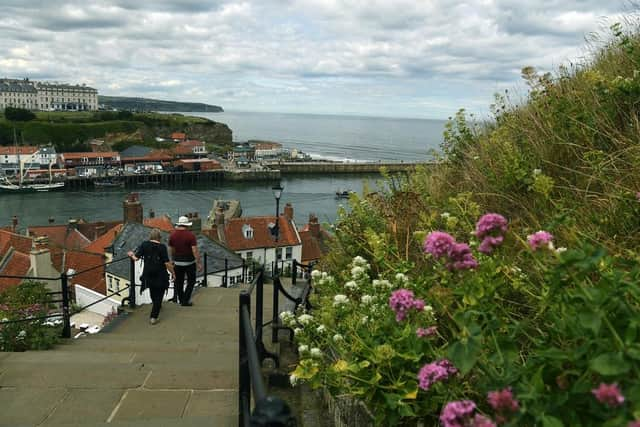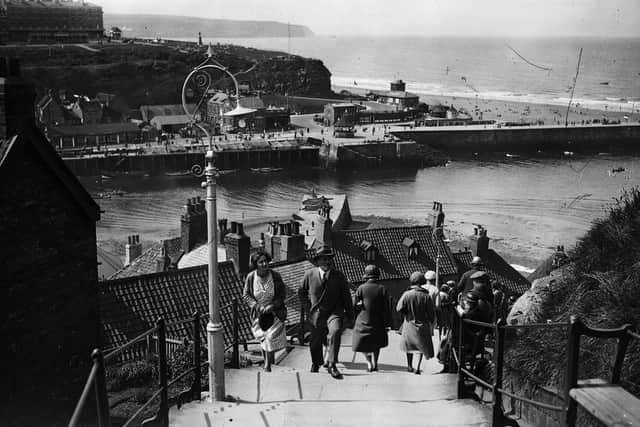199 steps: Why were Whitby’s famous steps built and what is the history behind one of Yorkshire's most popular tourist attractions?
The Whitby 199 steps are a Grade I listed structure located between the Old Town and St Mary’s Church.
The steps have become a popular tourist attraction, particularly after being mentioned in the book Dracula by Bram Stoker. It is thought to have been inspired by the wreck of the brigantine Dmitry which ended up stranded on Collier’s Hope in the outer harbour.
Advertisement
Hide AdAdvertisement
Hide AdIn the novel, Dracula runs up the 199 steps to the graveyard in St Mary’s Church after the shipwreck of Demeter in the shape of a black dog.


Why were Whitby’s famous steps built?
It is believed that the 199 steps were used as a test of Christian faith to those who wished to worship in St Mary’s Church.
Climbing the steps would prove that you are dedicated to your faith and they are a challenge to climb to this day by visitors.
History of Whitby 199 steps


The 199 steps were first documented in 1370 and were made out of wood until the 1770s. However, it has been thought that they existed at least before this time as St Mary’s Church existed since the 12th century.
Advertisement
Hide AdAdvertisement
Hide AdIt is occasionally referred to as Jacob’s Ladder which is linked to a similar biblical reference and leads to the town centre and church.
The steps still exist in several locations on the incline to provide mourners a place to ‘rest’ the coffin they are carrying during funerals. It is thought that the last coffin to be carried up the steps was a previous rector of Whitby, Reverend George Austen, whose funeral was in 1933.
They were regarded by some locals as the dedication of Christians in the town, having to go through trials and tribulations to worship.
The steps were made out of wood until 1774 and painted in bright colours. The road at the bottom of them was previously called Henrietta Street.
Advertisement
Hide AdAdvertisement
Hide AdThe challenges around climbing the steps resulted in a new church being built on the west side of Whitby in 1778 called St Ninians.
The number of steps was debated in the 18th and 19th centuries by religious figures and historians until 1877 when a major restoration confirmed the number was 199.
They were renovated in 1988 which included a donation from the Prince of Wales and in 2004 it was discovered that the bottom end of the steps was sinking and no longer suitable for health and safety.
The stairs and parallel road, known as the Donkey Road, are collectively listed as Grade I structures.
Comment Guidelines
National World encourages reader discussion on our stories. User feedback, insights and back-and-forth exchanges add a rich layer of context to reporting. Please review our Community Guidelines before commenting.
